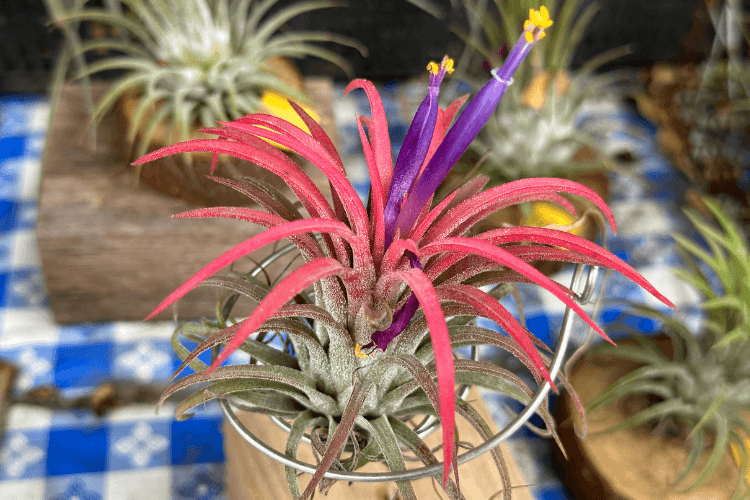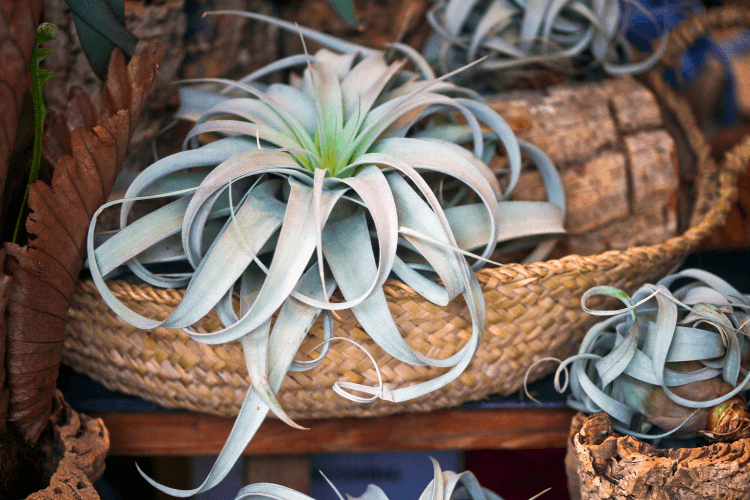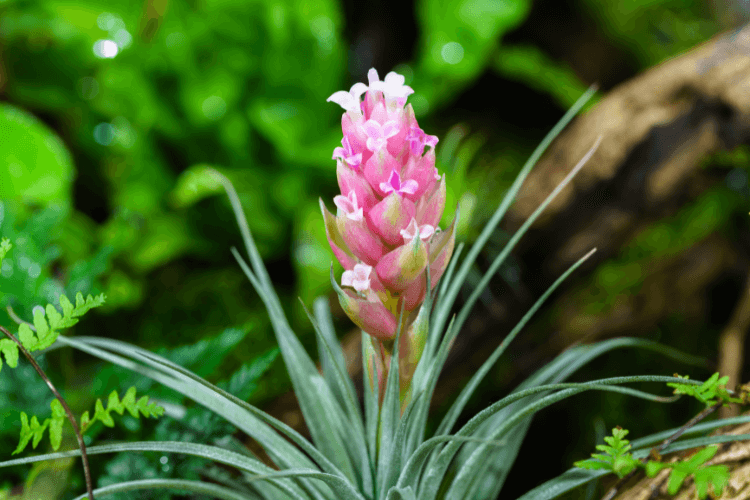Imagine adding a touch of elegance to your home with plants that thrive without soil, require minimal care, and look stunning in any setting. Enter air plants, nature’s little wonders. These unique, low-maintenance beauties are perfect for anyone looking to add greenery to their space without the hassle of traditional gardening. Whether you’re a plant enthusiast or a newbie, this ultimate guide will equip you with everything you need to know about air plants, from their care requirements to the many varieties available.
Table of Contents
What Are Air Plants? A Unique Wonder of Nature

Air plants are epiphytes, meaning they grow without soil, absorbing water and nutrients through their leaves. Belonging to the Tillandsia genus, these plants are native to Central and South America, where they thrive in warm, humid climates. Unlike traditional plants, air plants use their roots solely for anchoring to surfaces like trees, rocks, or even buildings.
Key Features
- Soil-free growth: A unique ability to absorb nutrients through trichomes on their leaves.
- Low-maintenance: Ideal for those with busy schedules.
- Versatile: Perfect for creative displays and home decor.
Benefits of Having Air Plants in Your Home
1. Air Purification
Air plants naturally purify the air by removing toxins and improving indoor air quality. Adding them to your living spaces creates a healthier environment for you and your family.
2. Aesthetic Appeal
From hanging displays to terrariums, air plants bring a modern, minimalist vibe to your decor. Their unique shapes and sizes make them perfect for enhancing any space.
3. Stress Reduction
Studies show that having greenery around can reduce stress and boost mental well-being. With their calming presence, air plants can transform your home into a serene oasis.
4. Easy Maintenance
Unlike traditional houseplants, air plants don’t require frequent watering or fertilizing, making them perfect for beginners.
5. Great for Small Spaces
Because air plants don’t need pots or soil, they are ideal for small apartments or areas where space is limited. Their compact size allows them to fit in creative displays or even hang from ceilings.
6. Educational Opportunities
If you have kids, air plants can be a great way to teach them about nature and plant biology. Their unique way of growing sparks curiosity and provides a fun learning experience.
Popular Types of Air Plants
Tillandsia Ionantha (Ionantha Air Plant)

This compact and colorful variety is one of the most popular Tillandsia Air Plant. Its vibrant green leaves blush red when blooming, adding a pop of color to your decor.
- Size: Small, about 2-3 inches.
- Care: Prefers bright, indirect light and weekly soaking.
- Special Feature: Produces a stunning purple flower during its bloom.
Tillandsia Xerographica

Known as the “King of Air Plants,” this large and sculptural variety makes a striking centerpiece.
- Size: Can grow up to 12 inches.
- Care: Thrives in bright light and requires occasional misting.
- Special Feature: Perfect for standalone displays due to its dramatic look.
Tillandsia Stricta

With its vibrant blooms, Tillandsia Stricta is perfect for adding a touch of elegance to any space.
- Size: Medium, about 4-6 inches.
- Care: Regular misting and bright light are ideal.
- Special Feature: Known for its striking pink blooms that add a pop of color.
Tillandsia Capitata

This variety is known for its soft, peach-colored hues and elegant rosette shape, making it a favorite among collectors.
- Size: Medium, around 4-5 inches.
- Care: Requires moderate light and weekly soaking.
- Special Feature: Turns a vibrant red or pink when in bloom, making it a favorite among collectors.
Tillandsia Bulbosa

The twisting, alien-like leaves of this variety make it a standout choice for unique decor.
- Size: Small to medium, about 3-5 inches.
- Care: Thrives in indirect light and prefers frequent misting.
- Special Feature: Unique appearance and a preference for terrarium displays.
| Air Plant Variety | Size | Bloom Color | Care Needs |
|---|---|---|---|
| Ionantha | Small (2-3 in) | Red | Weekly soaking, bright light |
| Xerographica | Large (12 in) | Pale Green | Misting, bright light |
| Stricta | Medium (4-6 in) | Pink | Regular misting, bright light |
| Capitata | Medium (4-5 in) | Peach | Moderate light, weekly soak |
| Bulbosa | Small (3-5 in) | Purple | Indirect light, frequent mist |
How to Care for Air Plants

1. Lighting Requirements
Ideal Light: Bright, indirect sunlight is best. You can place them near a window or under fluorescent lights.
Avoid Direct Sunlight: Prolonged exposure to direct sunlight can scorch their leaves.
2. Watering Tips
Proper hydration is key to keeping your plants healthy. Follow these methods:
- Soaking: Submerge your plants in water for 20-30 minutes once a week.
- Misting: Lightly mist them 2-3 times a week, especially in dry environments.
- Drying: Always shake off excess water and let them dry upside down to prevent rot.
| Watering Method | Frequency | Best For |
|---|---|---|
| Soaking | Once a week | All types of Tillandsia |
| Misting | 2-3 times a week | Dry environments |
| Drying | After each watering | Preventing rot |
3. Fertilizing for Growth
Use a bromeliad-safe fertilizer monthly to provide essential nutrients. Dilute the fertilizer and apply it during watering.
4. Humidity and Temperature
Maintain a humidity level of 50-60% for optimal growth, Increase Humidity: Use a humidifier or place your plants in a bathroom or kitchen where humidity is naturally higher.
Keep temperatures between 50-90°F, as air plants prefer a warm, humid environment.
Common Problems and Solutions
Even with the best care, you may encounter some issues. Here’s how to address them:
1. Why Are My Air Plant Leaves Turning Brown?
- Cause: Sunburn, dehydration, or over-fertilizing.
- Solution: Adjust light exposure, soak the plant, and reduce fertilizer use.
2. Why Are My Air Plant Leaves Curling?
- Cause: Lack of water or low humidity.
- Solution: Increase watering frequency and humidity levels.
3. Why Is My Air Plant Not Flowering?
- Cause: Insufficient light or nutrients.
- Solution: Provide brighter light and fertilize regularly.
Creative Ideas for Displaying Air Plants

Let your creativity shine by showcasing air plants in unique and stylish ways:
- Terrariums: Arrange them in glass globes with decorative sand and pebbles.
- Wall Displays: Mount them on driftwood or cork bark for a vertical garden.
- Hanging Planters: Suspend them in macramé holders for a boho look.
- DIY Projects: Use seashells, wooden blocks, or metal frames to create custom displays.
| Display Idea | Materials Needed | Best For |
|---|---|---|
| Wall-mounted displays | Driftwood, hooks | Compact spaces |
| Terrariums | Glass globes, sand | Modern decor |
| DIY holders | Shells, stones, cork | Personalized decor |
| Hanging Gardens | Macramé, fishing wire | Vertical spaces |
| Table Centerpieces | Vases, candles | Dining areas |
Air Plant Propagation: How to Grow More
Understanding Air Plant Reproduction
Air plants reproduce through offsets, or “pups,” which grow at the base of the mother plant after it blooms. Once the pup reaches about one-third the size of the parent plant, it can be separated and cared for individually.
Steps to Propagate Air Plants
- Wait until the pup grows to a manageable size (at least 1 inch).
- Gently twist and pull the pup away from the parent plant.
- Place the pup in a suitable display area with proper light and humidity.
Tips for Successful Propagation
- Avoid separating pups too early, as this can hinder their growth.
- Provide extra care during the initial weeks to ensure the pup establishes itself.
- Use propagation as an opportunity to expand your collection or share plants with friends.
Frequently Asked Questions
Q: How do I get my air plant to bloom?
Encourage blooming by providing bright, indirect light and regular fertilizing. Many air plants, like the Ionantha Air Plant, develop vibrant flowers before reproducing.
Q: How long do air plants live?
Most air plants have a lifespan of 2-5 years, depending on care and environment.
Q: Can air plants grow indoors year-round?
Yes, air plants thrive indoors with proper light and humidity levels.
Q: Do air plants need special care during winter?
During colder months, reduce watering frequency and ensure they’re not exposed to freezing temperatures.
Q: Can I use tap water for my air plants?
It’s best to use rainwater or distilled water, as tap water may contain chemicals that harm air plants.
Conclusion:
Air plants are a versatile, low-maintenance addition to any home. From purifying the air to enhancing your decor, their benefits are endless. By following the care tips in this guide, you can enjoy the beauty and charm of these unique plants for years

